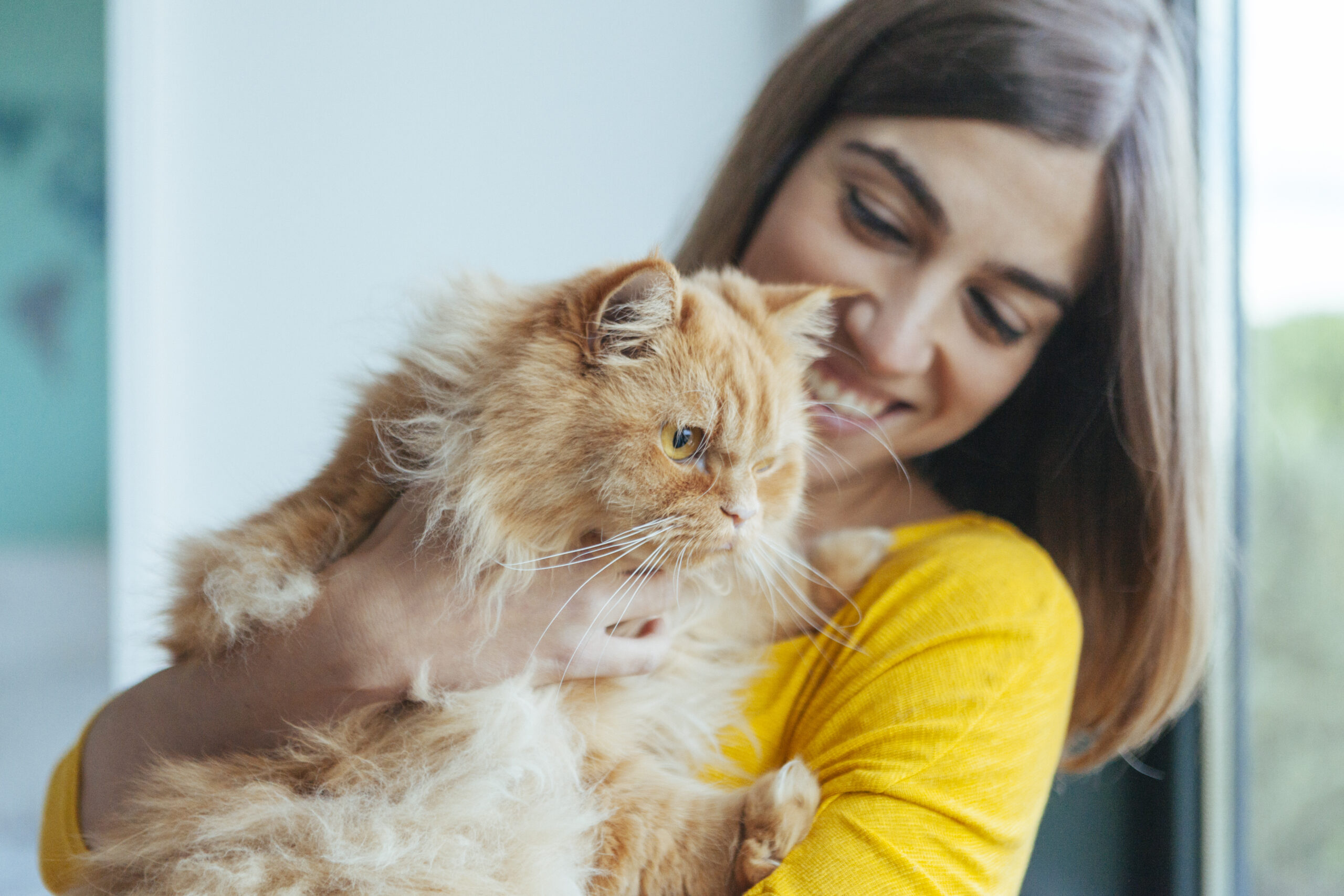Feline Endocrinology Care
Keeping Your Cat Happy and Healthy
Endocrinopathies are becoming more common in our senior and geriatric cat population as feline life expectancy is getting longer with improved veterinary care. At CSC we specialize in the diagnosis and management of many endocrinopathies including Hyperthyroidism, Hyperadrenocorticism (Feline Cushing’s Disease), Diabetes Mellitus, Acromegaly, Exocrine pancreatic insufficiency (EPI), and Hypercalcemia.
Professional Hyperthyroid Care
Hyperthyroidism is the most common endocrine disorder affecting middle-aged and older cats. Most cases (>95%) are caused by a benign growth on the thyroid gland (adenoma) that produces excess levels of thyroid hormone. The most common clinical signs seen in hyperthyroid cats are variable but may include weight loss, increased appetite, changes in behavior, increased vocalization, agitation, increased activity (the senior cat who acts like a kitten again!). Some cats may also experience increased thirst and urinations, vomiting or diarrhea, house-soiling, and changes in the hair coat. The diagnosis of hyperthyroidism is made by a combination of clinical signs, physical exam findings, and laboratory results.
Left untreated, hyperthyroidism can lead to marked weight loss and serious complications due to damage to the cat’s heart, kidneys, digestive tract, and many other organs. With early diagnosis and appropriate treatment, the majority of treated hyperthyroid cats will gain weight and muscle back, experience resolution of their clinical signs, and go on to live many good quality years. There are multiple treatment options available for cats with hyperthyroidism, each having advantages and disadvantages over the others, they are administration of a daily medication (methimazole/carbimazole), dietary iodine restriction, surgical removal of the affected thyroid gland, administration of a single dose of radioactive iodine (allows for complete cure in most cases). The choice of treatment can depend on many factors including the cat’s age, concurrent medical diseases, treatment cost, and will be discussed in detail during your cat’s consultation with our team.
Professional Diabetes Mellitus Care
Diabetes mellitus develops most commonly in the cat due to inadequate response to insulin (similar to type 2 diabetes in humans). Less commonly it can be caused by insufficient production of insulin by the pancreas (type 1 diabetes). Diabetes prevents cats from utilizing glucose properly, which ultimately leads to chronically elevated blood sugar levels and sugar in the urine. Clinical signs include excessive thirst, increased urination, urinating outside the litter box (house soiling), weight loss, increased appetite, lethargy and weakness. Left untreated, diabetes can result in infections of the kidneys, bladder and mouth. Progression of the disease ultimately leads to further metabolic disturbances including the development of life-threatening diabetic ketoacidosis. Although diabetes mellitus can affect cats of any breed, sex, or age, it most often occurs in obese individuals, seniors, and neutered males. The exact cause of the disease in cats is not known, although several theories include genetic predisposition, obesity, chronic pancreatitis, hormonal imbalances, and long-term use of corticosteroids (such as prednisolone).
Historically, the treatment of diabetes would require daily insulin injections at home, however currently there are newer options for treatment including daily oral SGLT2-inhibitor medications. Dr. Saffire has several years of experience using these newer treatment options and has experience as an investigator in research studies and clinical trials using oral diabetic treatments prior to their commercial availability.
Why is Diabetes Care So Important?
Monitoring a patient on insulin treatment can be challenging and expensive. Blood glucose curves can be stressful for the feline patient as they often require full day boarding at the clinic with multiple repeat needle pricks. Instead of blood glucose curves, the CSC recommends placement of continuous glucose monitoring devices (Libre sensors) that are temporarily attached to the skin and allow the pet parent to collect glucose curve data in a needle-free, feline friendly way, via their cell phone. The doctor can then review several days of glucose readings to make accurate adjustments to insulin if needed. For patients on oral medications, blood glucose curves are not required. Instead, these patients will come in for lab monitoring every 4-6 months (once stable).



